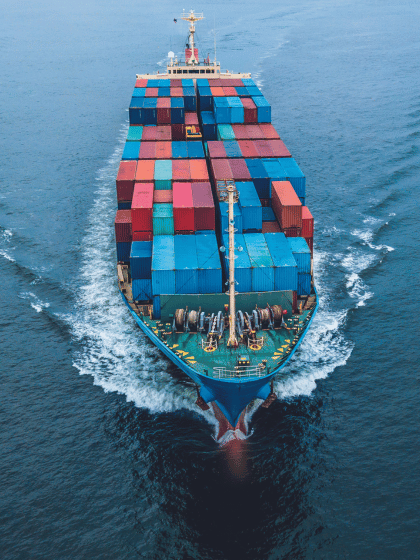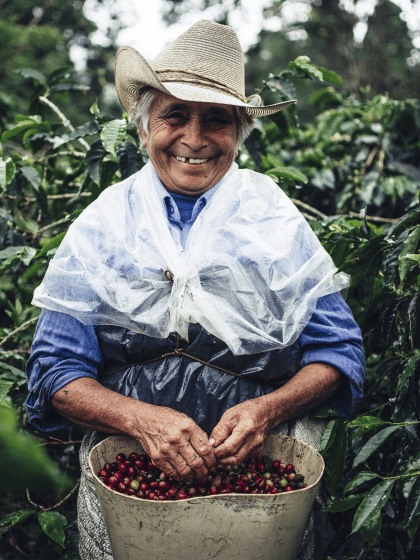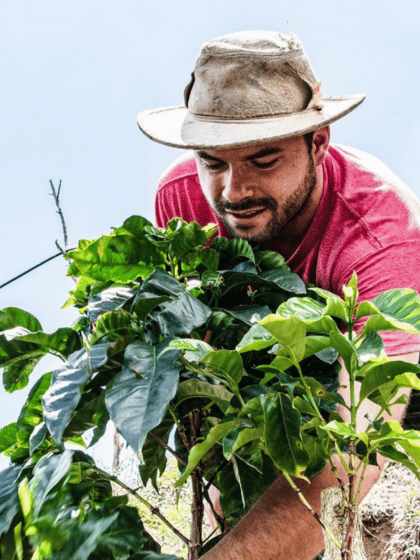
A Journey Through History and Geographical Diversity
Coffee in Colombia
Colombia has a rich history and a unique geographic landscape that contributes to its prominence in the specialty coffee industry, being the world's largest producer of washed Arabica coffee.
All this is due to the specific terroir of Colombia with lots of rain, which means that the coffee farms have to be creative when it comes to the drying process.
Colombian Coffee
Historical Footprints
Coffee cultivation came to Colombia in the early 18th century, brought by Jesuit monks to the areas that are now called Colombia.
The first written record of coffee in the region dates from the 1730s and the caffeinated beverage quickly gained popularity. Coffee exports began in 1835 and by the end of the 19th century, coffee became Colombia's main foreign export, generating significant government revenue.
The coffee industry faced challenges during periods of fluctuating prices, conflicts and economic instability. Nevertheless, it recovered from World War I and played a crucial role in Colombia's economic growth. The establishment of the Federación Nacional de Cafeteros de Colombia (FNC) in 1927 marked a turning point and led to scientific research, infrastructural development and financial support for coffee growers.

Steep Mountain Sides to Plains
Geographical Diversity
Colombia's geographic features contribute to the country's distinctive conditions for specialty coffee cultivation. The Andes dominate the landscape. Specific regions are known to produce high quality coffee due to their high altitudes, fertile volcanic soils and wet climate.
Colombia's coffee regions have two harvest seasons at different times of the year depending on their geographic location. This means that Colombia basically produces coffee all year round.
The northern and eastern regions have their primary harvest from September to December, with a secondary harvest, known as mitaca, in April to May.
In contrast, the central and southwestern regions conduct their primary harvest from March to June and a mitaca in October and November.
Two prominent coffee growing regions in Colombia are Antioquia and Cundinamarca, which we love and delve into as we often import coffee from these areas.
Our Colombian Coffees
Regions
Antioquia
Antioquia is Colombia's second largest coffee-growing region. The region is home to around 79,000 coffee-growing families, who typically grow coffee alongside other crops on small properties.
With its altitude ranging from 1,300 to 2,200 meters above sea level, Antioquia produces balanced coffees with fruity aromas, moderate acidity and a medium body.
The majority of coffee production in Antioquia comes from small farms with steep slopes. The primary varieties grown are Castillo and Colombia.
Cundinamarca
Cundinamarca, which surrounds Colombia's capital, Bogotá, is located on the eastern slopes of the Cordillera .
Altitudes in Cundinamarca range from 900 to 2,200 meters above sea level.
Coffee cultivation in Cundinamarca began on large haciendas , but transitioned to smallholders in the 20th century.
The dominant varieties in Cundinamarca are Castillo and Colombia, and the coffee harvesting seasons take place from April to June and from October to December.

Our Colombian coffees
The varieties
We are very happy with our coffee, Misiones Castillo, from our direct trading partner in the Cundinamarca region, Café Misiones. Castillo is the name of a rust-resistant variety developed by Cenicáfe to improve cup quality, productivity and resilience. The Castillo variety is taller and therefore cannot be planted as closely, but it is very productive and produces beautiful, large seeds.
The fact that it is rust resistant is important to farmers, especially after the country experienced major production declines due to rust from 2008 to 2011, reducing production by over 30%. This is one of the reasons why Castillo is still one of the most important varieties grown in Colombia to this day.
Our Misiones Castillo is transparent and balanced with notes of mulberry, citrus, sugar cane and chocolate.
Our Colombian Coffees
The Varieties
In June 2023, we presented a coffee called Exótico de Giraldo, which is of the Caturra variety.
Caturra is a naturally occurring dwarf mutation of Bourbon. The variety first appeared in Brazil in the 1910s and arrived in Colombia in 1952. Caturra trees are small and compact due to the dwarf mutation, which allows farmers to plant them closer together. A big advantage of Caturra is that the reduced height makes it easier to harvest by hand.
Caturra as a variety has had a huge impact on coffee production, especially in Colombia, and used to make up almost half of production. The variety is well adapted to grow in regions that experience constant rain.
Exótico de Giraldo is a sweet and juicy coffee with notes of orange, muscovado sugar and black tea.
Colombian Coffee
Resilience and Progress
Although coffee's relative importance to Colombia's economy has diminished over time, it remains a crucial component that creates employment opportunities and contributes to rural development.
Almost all coffee in Colombia is picked by hand due to the steep slopes, making it almost impossible to mechanise the harvesting process.
The small family farms harvest themselves, perhaps with a helping hand from neighbours - and then they return the favour when it's the other way around. The larger farms depend on temporary workers. However, many farmers these years experience the problem that not many people find it attractive to work in the coffee fields.
Colombian coffee has earned an excellent reputation in the specialty coffee market and is known for its consistency, well-balanced flavour nuances and diverse profiles.
The Colombian coffee industry has adapted to changing market demands by exploring organically grown coffee and shade coffee, as well as experimenting with pre-depulping fermentation processes, allowing coffee farmers to access premium markets and improve their livelihoods.

Colombian Coffee
Weather Changes
Colombia's landscapes and people - and thus Colombian coffee itself - are vulnerable to changes in weather and climate.
Coffee cultivation is often associated with deforestation, soil and water pollution, soil erosion and the emission of greenhouse gases. Hopefully the keys to preventing these phenomena are found within the industry itself and are no longer taken for granted.
Recent years have been particularly affected by weather conditions, rising labor and input costs, and the lingering effects of the global pandemic. This makes the conditions for coffee production extremely difficult.
Colombian Coffee
Weather Changes
In Colombia, research and pilot projects are being carried out to reduce emissions and the use of pesticides, and to minimise water pollution in the washing process. In addition, carbon is stored in the soil with the help of trees.
The weather- and climate-sensitive coffee plants are on the front line of climate change, and the coffee farmers must work creatively and adapt to the new weather conditions. Planting native trees among the coffee trees in an agroforestry system can help diversify the species and store carbon.
A life cycle analysis in Colombia has shown that agroforestry techniques require fewer external inputs such as fertiliser, as the system itself provides it naturally. In addition, the additional trees increase biodiversity, reduce soil erosion and protect water quality.
Colombian Coffee
Status
The coffee industry in Colombia stands as a testimony to the country's historical, geographical and cultural importance. From its roots in the 18th century to its position as the world's largest producer of washed Arabica coffee, Colombia's coffee industry has undergone changes and faced numerous challenges.
Today it thrives thanks to the dedication and resilience of smallholders and the support of organisations such as FNC.
Colombian coffee's exceptional quality and diverse flavour nuances continue to excite coffee connoisseurs around the world, including us. These characteristics ensure that Colombian coffee remains valued and loved.












